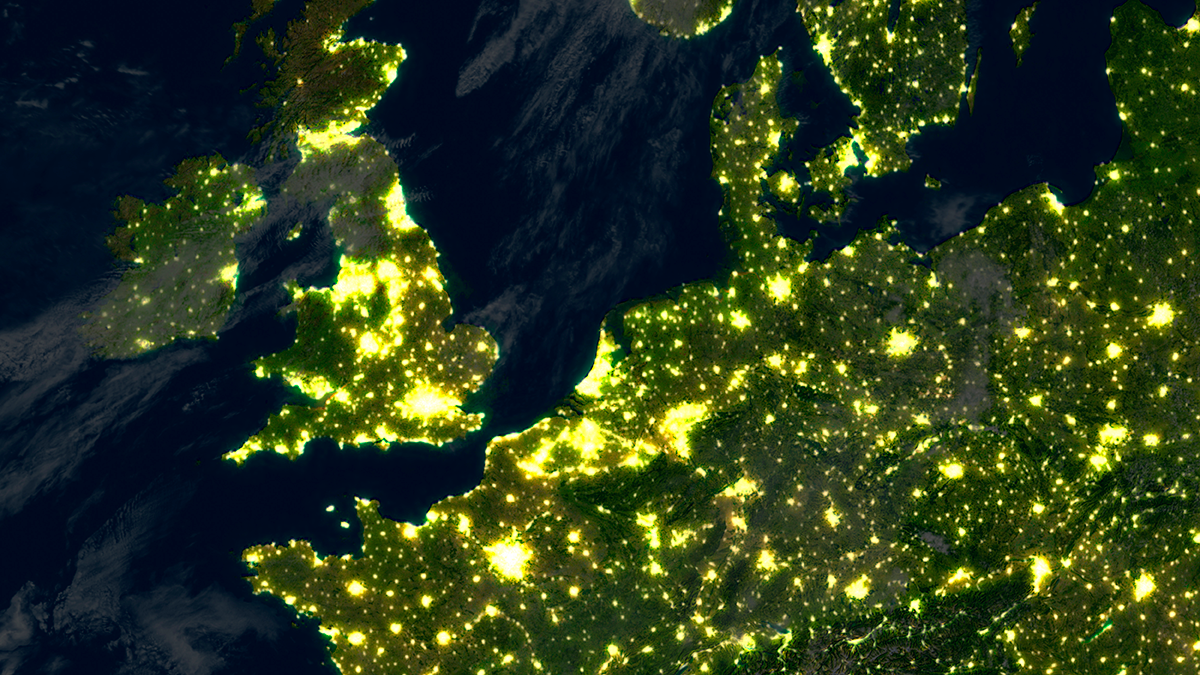European megacities

As urbanization intensifies, the concept of a network of megacities in Europe becomes increasingly realistic.
Global phenomenon
More than half the world’s population lives in cities. According to the United Nations, approximately
two thirds of the world’s population will be living in an urban area by 2050. These staggering numbers illustrate the massive urbanization of society. Even though trends differ across regions and development levels, virtually all countries across the world are becoming increasingly urbanized.
With this development comes the logical growth of cities. In densely populated areas, neighbouring cities fuse together and one-time suburbs become part of the metropolis. The United Nations defines megacities as urban or metropolitan areas with
at least 10 million inhabitants – and on an even larger scale, gigacities count more than 100 million inhabitants. None of those exist today, but the Chinese government is reportedly planning to connect multiple cities in various regions, resulting in several of these gigacities. The Greater Shanghai region would then possibly be home to more than 170 million inhabitants by 2020.
European megacities
In Europe, too, urbanization is a discernible trend. As early as the 1960s, architect Yona Friedman predicted “the development of a dense urban belt stretching from the City of Oxford in South East England to the Rhine-Ruhr region of Germany”.
In recent years, a POLYNET study researched “sustainable management of European polycentric mega-city regions”. The project discerns eight megacity regions in northwest Europe: southeast England, the Paris region, central Belgium, the Dutch Randstad, Rhine-Main, Rhine-Ruhr, northern Switzerland and greater Dublin.
Architect and designer Edwin Heathcote explains: “Ironically, the suburban growth of the cities in this belt, which has coincided with the decline of heavy industry, infrastructural developments and city- scale airport hubs, may be making Friedman’s vision a reality.” Additionally, there are also plans for a Hamburg-Copenhagen megacity.
Central Belgium and the Randstad
Focussing on central Belgium (the Brussels area) and the Dutch Randstad (a crescent of cities in the west of the Netherlands), both regions have a combined number of inhabitants of 15.1 million. Globally, they are considered key centres of influence, for several reasons.
From a political point of view, Brussels is the de facto capital of the European Union, a major centre for international politics, and home to many international organizations. The Hague, though not the capital of The Netherlands, is the seat of the Dutch government, and is home to the International Court of Justice and the International Criminal Court.
Economically speaking, the region plays a major role in international trade, with the ports of Rotterdam and Antwerp being the largest and second largest in Europe. The Randstad is also the favourite place for multinationals to locate their European headquarters. Amsterdam is considered one of the top financial centres in the world, aside from being the commercial hub of the Randstad. The Globalization and World Cities Research Network (GaWC) considers both Amsterdam and Brussels ‘Alpha’ cities: cities “that link major economic regions into the world economy”.
Challenges and opportunities
Megacities come with new challenges, among which are environmental damage, inequality, governance issues, overcrowding, crime, and shortages in power, food, water and clean air. Solutions will have to be found for these issues.
However, new opportunities are also on the horizon. In its ‘Urban Europe’ report, Eurostat mentions ‘green cities’ as an opportunity in an increasingly urbanized society. Eurostat: “Although the ongoing process of urbanisation has created some of
the biggest challenges facing the planet, it also provides potential, insofar as cities are creative hubs and may provide possible solutions to a range of environmental issues.”
Connectivity
Eurostat also describes the rise of so-called ‘smart cities’, “where traditional networks and services
are made more efficient […] for the benefit of its inhabitants and businesses”. Edwin Heathcote explains that in order to function, the megacity “will need connectivity. Digital networking has not, as was forecast, led to a decline in the city. Rather, it has led to an urbanisation of the rest of the planet.”
With the continuing urbanization of society, Europe’s megacities are expected to become even more strongly interlinked, both within their own metropolitan areas and with each other.